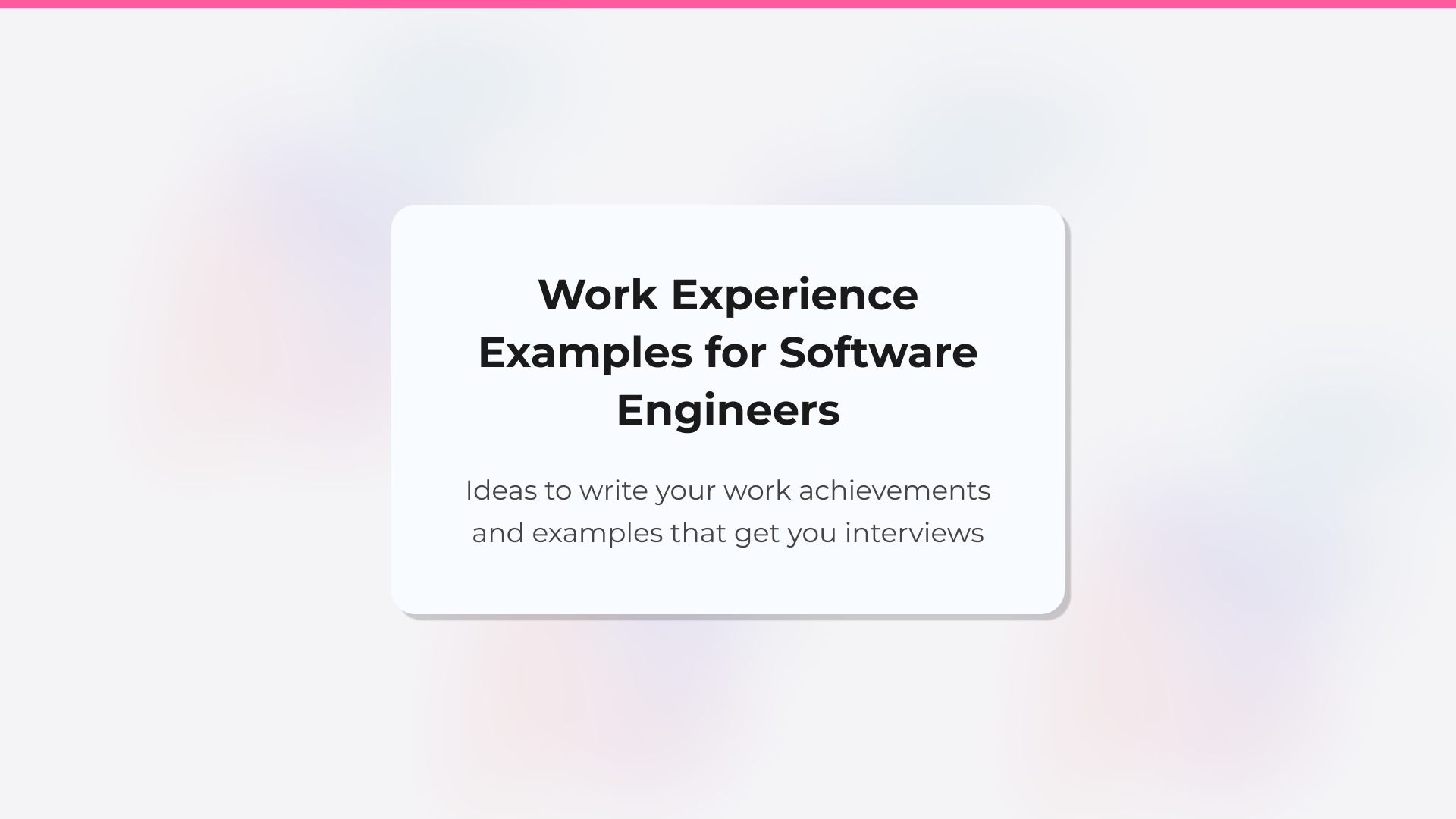
How to describe work experience on a resume: tips and examples
The work experience section is usually the first (and often the last) part of your resume that recruiters read. That’s why it needs to be spot-on.
The key is turning your career story (no matter how short, diverse, or non-linear) into a clear and human narrative: what problems you solved, how you did it and what changed thanks to your work. One that positions you as the ideal candidate, resonates with the reader and makes it past the ATS filters.
In this article updated for 2026 you’ll learn:
- How to write your work experience section using a mix of achievements and storytelling to stand out from other candidates.
- Ideas to turn daily tasks into measurable results, even if you don’t have exact data or aren’t sure how to reframe them.
- How to decide which roles to include and how many jobs to list, based on your career stage, so your resume stays sharp and relevant.
- How to choose the best resume format (chronological, functional, hybrid, or project-based) to highlight your experience effectively.
- How to build a resume with no work experience, using personal projects, volunteering, or training as real, credible assets.
Why your Work Experience section is key to landing interviews
The work experience section on your resume is more than just a chronological list of jobs. It’s what recruiters scan first to answer three essential questions, often in just a few seconds:
- Have you done something similar to what this role requires?
- Have you delivered real, relevant results for a company like mine?
- Does your career path show growth or stagnation?
This isn’t about inflating job titles or name-dropping big companies. Employers aren’t just looking for credentials, they’re looking for impact. They want to know what problem you solved, how you approached it, and what you learned. And it doesn’t need to be recent, it needs to be relevant to the role.
The most common mistake is treating this section as a plain timeline, without thinking about how to frame, quantify, or align it with the job you want. So do it differently: add numbers, highlight outcomes, explain the context, and show your value.
A well-written work experience section can mean the difference between being skipped and getting the interview. Let’s break down how to get it right.
How to write the Work Experience section on your resume
Recruiters want to know what you contributed, what you learned, and how you made a difference throughout your career. If they see that you’ve already achieved somewhere else what they need in their company, chances are they’ll call you. Here’s how to show it:
1. Use a clear, professional structure
Your work experience should be easy to scan and understand. Stick to a reverse chronological format (it’s the most recruiter and ATS-friendly) and include:
- Job title.
- Company name.
- Start and end dates (month and year).
- Location (city and country, or “Remote” if applicable).
- (Optional) A short description of the company if it’s not well known (e.g., “50-person B2B SaaS startup in the fintech space”).
If you held multiple roles at the same company or got promoted, highlight that. Progression tells a strong story about your performance.
2. Combine key responsibilities with real achievements
It’s okay to mention key tasks, but focus on what you accomplished with them. Use this simple formula:
Action verb + context (+ tools) + result
For example:
“Streamlined the inventory system, cutting stock errors by 40% in three months.”
This kind of sentence shows skills, measurable impact, and a results-driven mindset.
Achievements don’t always have to be numbers, qualitative impact matters too. Here’s a before-and-after example for a Marketing Assistant to make it clearer:
| ❌ Weak narrative ❌ | ✅ Strong narrative ✅ |
| • In charge of social media • Supported campaigns • Tracked metrics |
• Designed an Instagram campaign that increased leads by 30% in 3 months, managing a €5,000 budget • Created monthly reports with key performance metrics, helping optimize digital strategy • Strengthened planning skills under pressure, essential in fast-paced environments |
| Too vague, it shows no impact and it could describe any candidate. | Effective because it uses action verbs, shows real results and reflects growth. |
3. Use the STAR method to write strong achievements
If you’re just starting out or switching industries, the STAR method (Situation, Task, Action, Result) is a powerful and simple storytelling tool. It helps you highlight transferable skills and turn your experience into mini success stories:
- Situation: what was the context or challenge?
- Task: what was your responsibility?
- Action: what did you do?
- Result: what was the outcome?
4. Optimize for both recruiters and ATS
Be sure to include relevant keywords from the job posting. This makes your resume more compelling to recruiters and earns more points from the ATS.
Here’s a step-by-step guide on how to tailor your resume to a specific job description, so you can weave the right keywords into your work experience without keyword stuffing.
 |
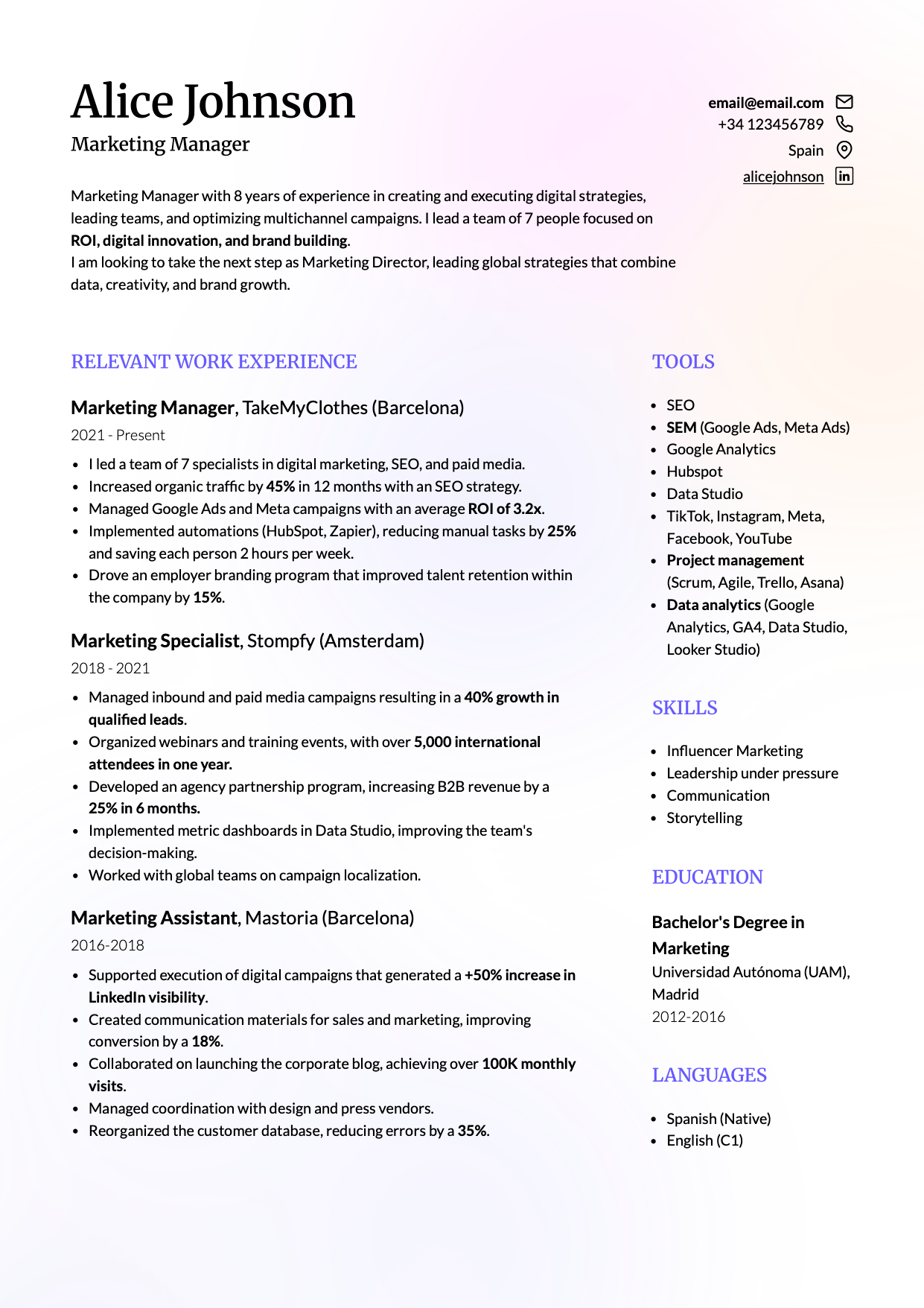 |
If you want role-specific work experience examples, here are two that make the “what to write” part much easier:
-
Software engineering: examples and achievement ideas for your software engineer resume experience.
-
Digital marketing:examples to write stronger bullets for your digital marketing resume experience.
How to write your current job on a resume to show impact
As we’ve already covered, your work experience section should show impact. But if you have a lot of experience, you don’t need to over-explain older roles. Recruiters focus on your most recent positions and, above all, your current role. This is where you must make it obvious what you’re changing, how you’re doing it, and what’s already improved, even if the project isn’t “finished” yet.
A structure that almost always works:
- One line of context (only if it helps the reader understand scope): company type, size, industry, complexity.
- 2 - 4 bullet points:
- 1 “big responsibility” bullet (only if your role needs framing).
- 2 - 3 bullets showing visible impact or concrete deliverables.
Examples of current-role bullets that sound real (not like generic job duties):
“Leading a migration to [tool/platform] which has already reduced the incidence rate by 20%.
The point isn’t the tool. The point is: change in progress + a result that’s already visible.
“Reprioritized the team’s work to shorten delivery cycles and reduce rework.”
This shows you understand the actual problem (rework) and took action that changed outcomes.
“Implemented a reporting system to spot bottlenecks and adjust priorities weekly.”
Even without numbers, this communicates a specific improvement in how the team operates.
If you have metrics, great, use them. If you don’t, that’s fine. In the next section, I’ll show you how to write achievement-focused resume bullets without metrics.
How to write resume achievements without exact numbers
Not everyone works with data, and not every company shares business metrics openly. Even if you do work with numbers, chances are you haven’t kept them with you for when you need them. That’s why most people struggle to write strong achievements, it’s hard to know what to say and how to say it. Here are 10 creative strategies to highlight your impact even if you don’t have exact stats:
1. Unlock your memory with specific questions
Instead of asking yourself “what were my achievements?”, try:
- What did I learn in that job?
- What problem did I help solve?
- Who did I support directly, and how did their work or day improve?
- What did I do to make something run smoother?
These questions bring up specific memories you can turn into powerful resume bullet points.
2. Rebuild achievements with honest estimates
This isn’t about making things up, it’s about giving a truthful approximation without giving the specific data:
“Customer complaints dropped significantly after we redesigned the support workflow.”
“Delivery times noticeably improved after the new routine was implemented.”
Use adverbs like significantly, frequently, noticeably, or consistently to convey results without exact figures.
3. Focus on emotional or relational impact
Especially useful if you work with people and soft skills are the core of your job (education, healthcare, customer service, team coordination…):
“Earned the trust of a team resistant to change and helped roll out a new system with no friction.”
“Kept morale high during a tough restructuring by creating safe spaces for team communication.”
These achievements matter. In fact, emotional intelligence is one of the most in-demand skills right now, so any sign you’ve developed it is a huge plus.
4. Set the scene if you can’t quantify
Place your contribution in a complex or high-pressure context:
“Adapted customer service protocols during the pandemic without compromising quality.”
5. Turn everyday tasks into real impact
Ask yourself: what changed because of my work? Here’s how a simple task becomes a transformation:
| ❌ Weak narrative ❌ | ✅ Strong narrative ✅ |
| Scheduled weekly meetings. | Organized weekly meetings that helped identify blockers and speed up delivery. |
| Wrote reports. | Created reports that informed key strategic decisions. |
| Managed social media. | Designed a campaign that boosted engagement by 30% in two months. |
6. Get inspired by others in your role
Search for people with similar job titles on LinkedIn and check how they describe their achievements. It’s a great way to learn how to reframe your daily tasks into outcomes that recruiters recognize and value.
7. Keep your resume updated regularly (online CV)
Don’t wait until you’re job hunting to remember what you did well. Every time you solve a problem, hit a milestone, or get positive feedback, make a quick note. That way, your resume will practically write itself when you need it.
You can jot down things like:
- Problems you helped solve.
- Positive feedback from managers or clients.
- Processes you improved.
- Things you do better now than before.
Keeping track of these moments makes your experience more compelling and easier to articulate later.
And if you use a digital resume, like the one you can create with CandyCV, keeping your resume updated becomes even more powerful. You’re not just collecting notes, you’re publishing them. Your resume becomes a personal website you can share anytime, with anyone, and it’s always up to date. No need to resend new versions or wonder if someone has the latest file. Your story evolves and your resume reflects that in real time.
At the end of the day, writing your work experience is about telling a clear, honest story of who you are, what you bring to the table, and how you make things better; with or without exact metrics.
How to format dates in the work experience section of your resume
This looks like a tiny detail. It isn’t. Dates tell a story. And when that story is confusing, recruiters (and ATS) won’t ask, “Wait, what does this gap mean?” or “You listed only the year, what month did you start?” They’ll move on to the next resume.
What date format should you use on a resume: day, month, or year only?
For work experience, the most useful standard is month + year. Not because it’s “the only correct way,” but because it hits the sweet spot between clarity and readability.
Examples that work:
- 03/2024 - Present
- Mar 2024 - Present
With month and year, your tenure is immediately clear. Whatever format you choose, keep it consistent across your entire resume.
Should you list only the year for work experience dates?
Listing only the year can be OK, but mainly when you’re summarizing older experience to save space (and even then, month + year is usually better).
For your current role, year-only tends to backfire because it leaves too much room for interpretation. Starting in January vs. November is a very different story, and hiding that detail (even unintentionally) can raise eyebrows. It also makes it harder for someone to quickly estimate your years of experience, which forces them to guess: exactly what you want to avoid.
How to show dates if you changed roles within the same company
This is usually a positive signal, so don’t hide it. When you present it clearly, it communicates growth, trust, and increased responsibility. You’ve got two clean options:
Option A: separate entries (best for clarity and keywords)
- Product Manager - Company X | 06/2024 - Present
- Product Analyst - Company X | 01/2023 - 06/2024
This makes the progression instantly obvious.
Option B: one company header with sub-roles (best if you need to save space)
- Company X | 01/2023 - Present
- Product Manager | 06/2024 - Present
- Product Analyst | 01/2023 - 06/2024
The main advantage of Option A is that your job title (the keyword) comes first, instead of giving the spotlight to the company name.
If you’ve been in the role for a short time
Don’t write “probation period.” A resume isn’t radical transparency, it’s a document designed to get interviews. All you need is:
- the date (month/year).
- 1 or 2 bullets with early outcomes or concrete deliverables (even small ones).
So if you started two months ago, you can’t credibly claim a “complete transformation.” But you can say: “analyzed X, proposed Y, we’re already executing Z.”
Sanity-check your work experience dates
Before you send your resume, scan this in 20 seconds:
- Are you using month + year for all roles (no mixed formats)?
- Does your current job have 2-4 impact bullets, not just job duties?
- If you changed roles internally, is the progression obvious at a glance?
What to include in the work experience section of your resume
Every job you include should reinforce one question: “Why you for this role?” Your resume isn’t a complete work history, but a curated story that makes your fit obvious. Here’s how to decide what stays.
Impact signals
If you can’t point to a relevant achievement, improvement, or lesson that connects to the job you want, ask yourself whether that role earns its space on the page. “I did the job” isn’t a signal. What changed because you were there is.
Transferable skills that strengthen your story
Ask: even if this was a different role, does it prove skills this employer cares about?
For example, waiting tables can demonstrate customer obsession, conflict management, and staying effective under pressure. That’s exactly the kind of transferable experience that supports roles in customer support, sales, or operations.
Tailor what you include based on your years of experience
Your experience section should scale with your career stage:
- Less than 2 years of experience: include internships, volunteering, part-time work, and temporary roles if they add relevant signals.
- 2-7 years: write strong bullets for your 2-3 most recent roles, and summarize older roles only if they add meaningful context.
- 7+ years: focus on what’s most relevant and group older roles under a section like “Additional relevant experience”.
What counts as relevant work experience
“Relevant” doesn’t mean identical job titles. It means the role shows similar tools, context, and problems to the target job; even if the title was different.
How to choose the right resume format
Format isn’t just design: it’s how you choose to tell your professional story. There are a few common resume formats, and each one highlights something different. The goal is to pick the one that best supports your case for the role.
- Reverse-chronological: the most common format and the easiest to scan.
- Combination (hybrid): great if you want to spotlight strengths without losing a clear timeline.
- Project-based: useful for consulting/freelance, but it can be trickier for some ATS to parse.
- Functional (skills-based): usually not recommended because it can feel vague, confuse recruiters, and some ATS interpret it poorly.
How to stand out on a resume with no work experience
Not having professional experience doesn’t mean you have nothing to say. It means you need to redefine what “experience” looks like and tell your story on purpose. The goal is to translate what you’ve already done into credible signals of value: school projects with real deliverables, personal initiatives, volunteering/internships, and transferable skills.
And if your “experience” is mostly education or credentials, learn how to list education and certifications on a resume (with examples).
Conclusion
Your work experience section isn’t a list of jobs, but a value story. It’s the thread that connects what you’ve done to what you can do next. A strong resume isn’t about having the “perfect” background. It’s about knowing how to communicate your impact.
FAQs about the work experience section on a resume
How do you describe work experience on a resume?
Use a scan-friendly structure (job title, company, dates) and 2 - 4 bullet points. Each bullet should communicate action + context (+ tools) + result, not a list of tasks.
What should I put under work experience if I don’t know where to start?
Start with your most recent role and write two achievements first: one meaningful improvement and how you made it happen. Then add one or two responsibilities only if they help the reader understand the context.
How do I list my current job on a resume?
Use “03/2024 - Present” and write achievements: what you’ve improved so far and what you’re building now.
What counts as relevant work experience?
Any experience that shows similar tools, problems, and context to the target role, even if the job title isn’t identical.
How many jobs should I include, and in what order?
Use reverse-chronological order. Write strong bullets for your 2 - 3 most recent roles and summarize older roles, especially if they don’t support your target job.
How do I write achievements if I don’t have metrics?
Don’t make numbers up. Provide context (the situation), describe your action, and explain what changed using qualitative signals or honest estimates.
Should I use a functional (skills-based) resume format?
Sometimes, but it’s risky. It can feel vague, and many ATS struggle to parse its structure. If you believe it represents your value better, use a hybrid format with a clear timeline, and when possible apply via email (try to avoid ATS intake forms).
What counts as experience if I haven’t worked in my field yet?
Projects, internships, volunteering, and personal initiatives count if they demonstrate transferable skills and outcomes.
We're two product builders who care about quality, taste and doing things right. We want you to get that job you want, plain and simple. That's why we are building CandyCV to help you create a great resume and land a job for free. If you give us a try (and feedback!), we'll be forever grateful 😊
Alba Hornero
Co-founder and Employability Expert
As CandyCV’s co-founder and a former product lead in HR tech, I’ve built ATS tools, optimized hiring processes, and interviewed hundreds of recruiters. I personally write every post with the intention to provide real, high-impact job search advice that truly helps you land your next role.
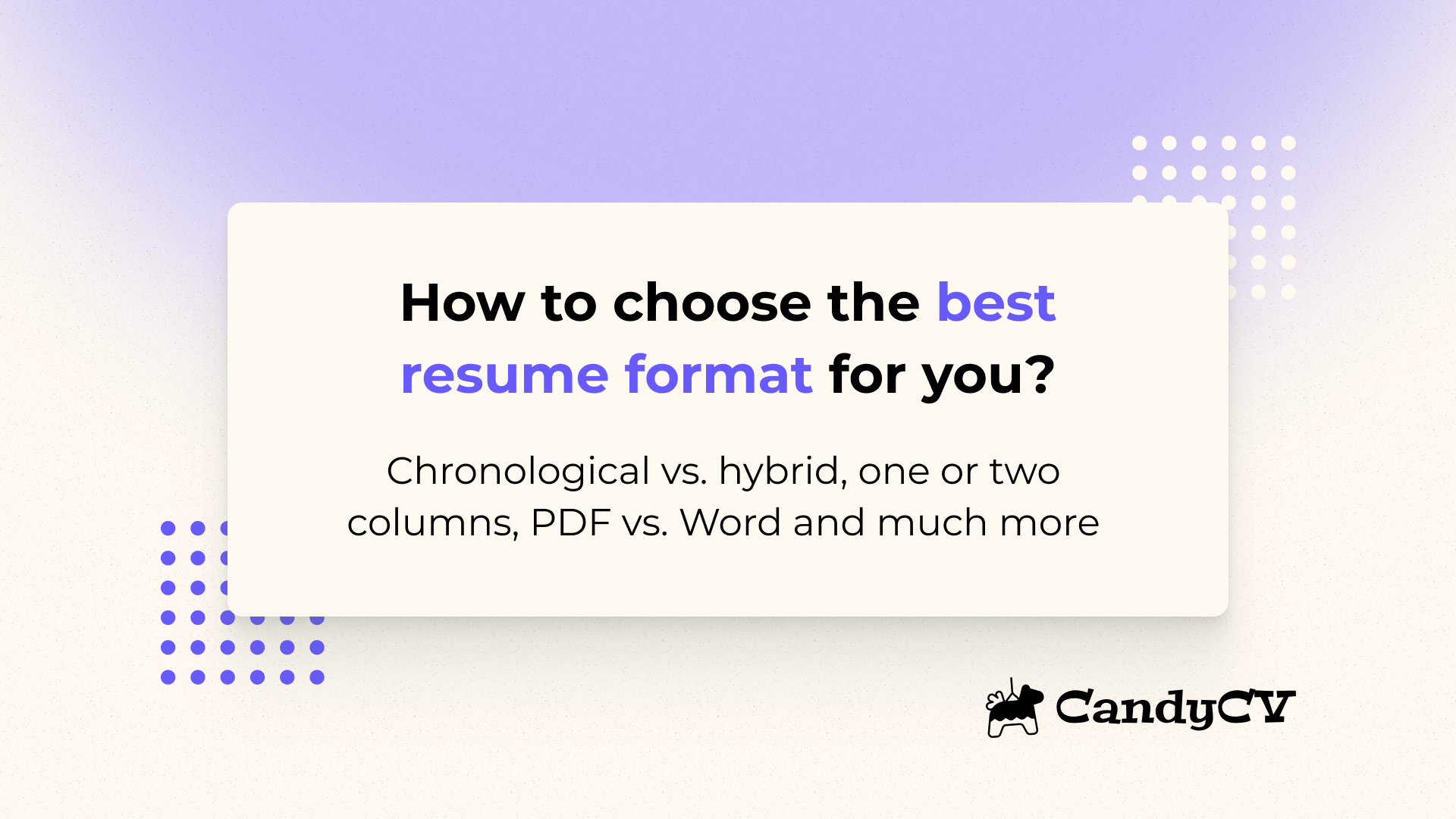
How to choose the best resume format for you
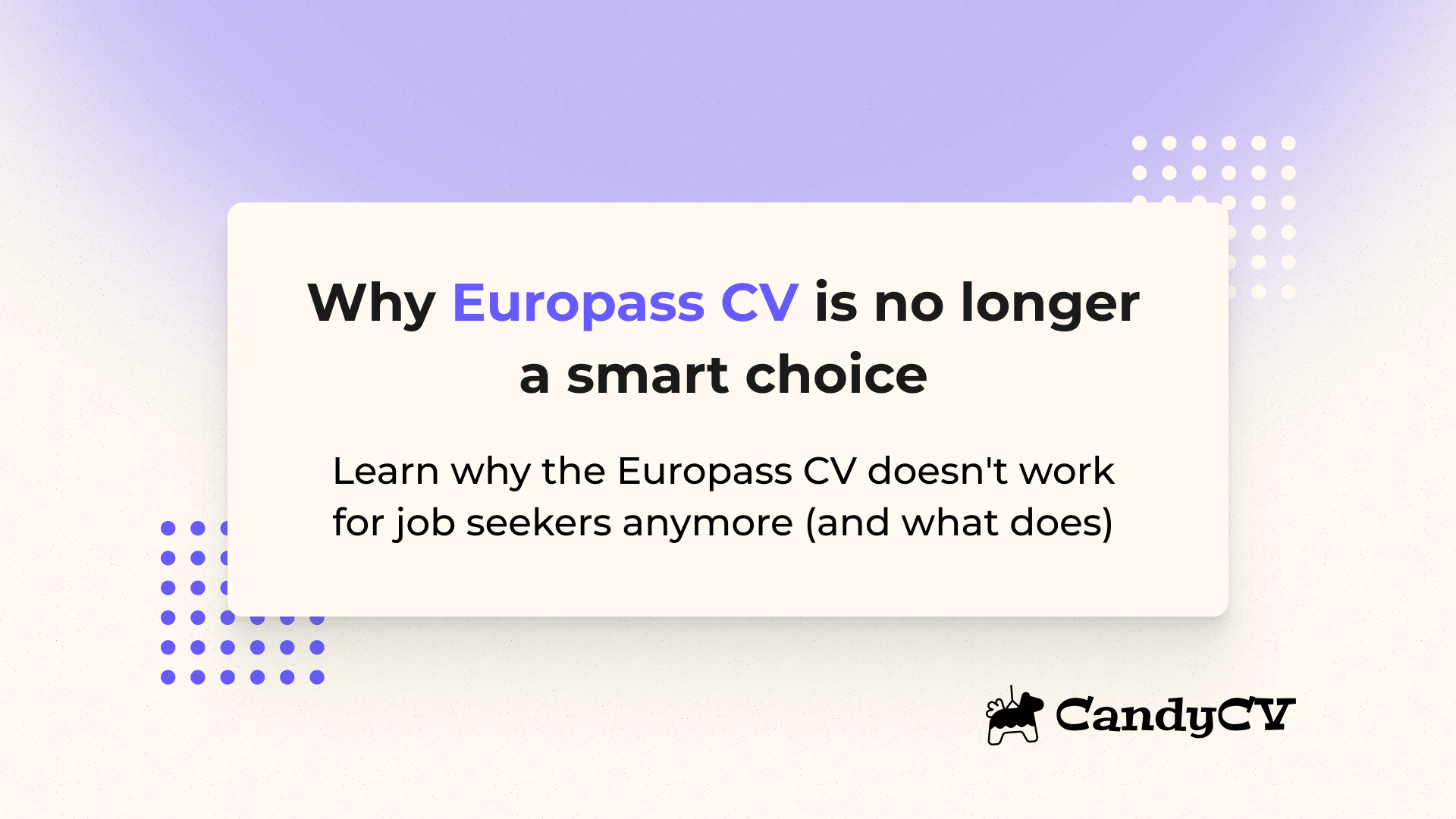
Europass CV: when it hurts your job search (and what to use instead)
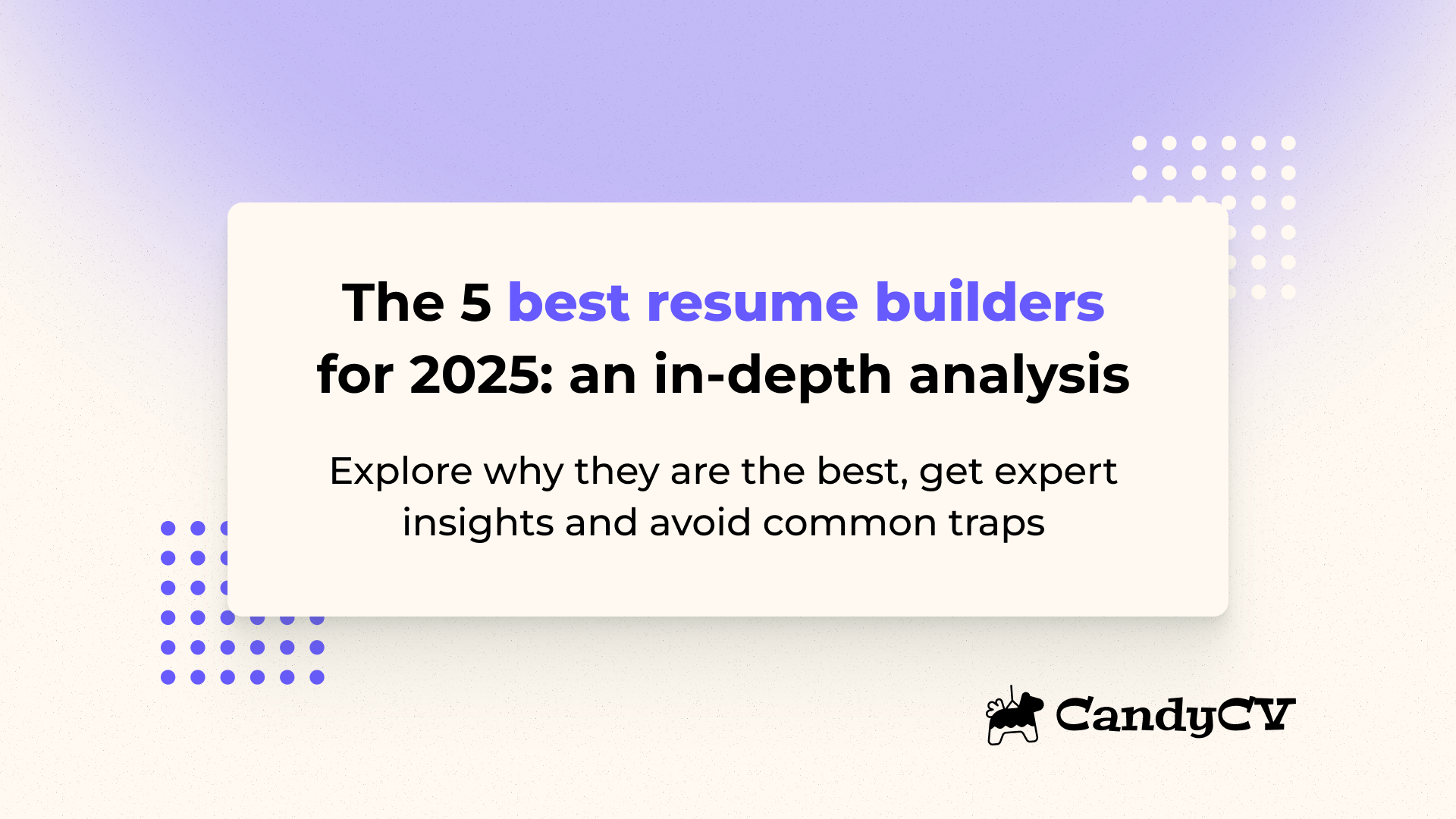
Top 5 resume builders: comparison and how to choose the best one
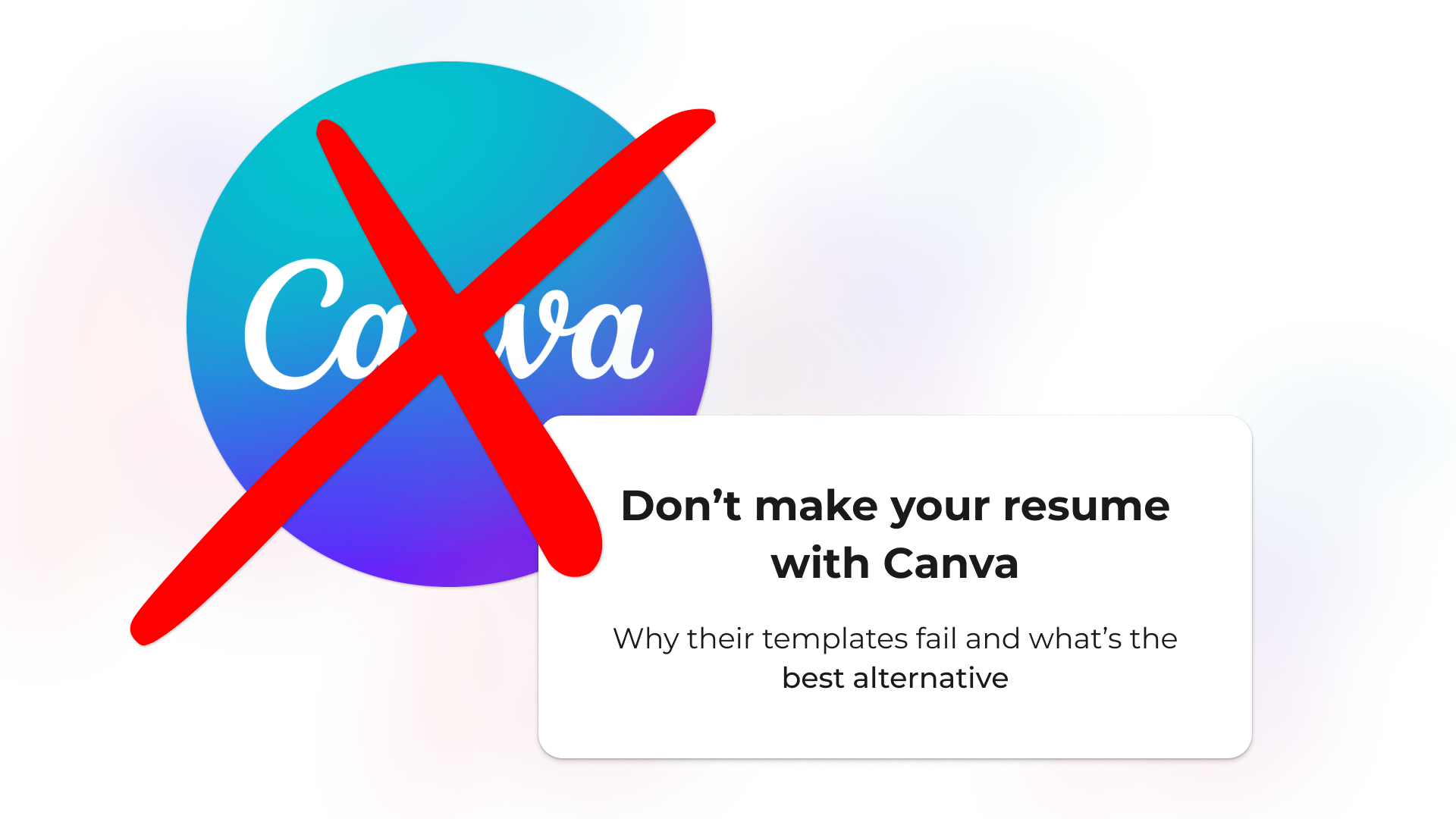
Don’t make your resume with Canva: why its templates fail and what to use instead
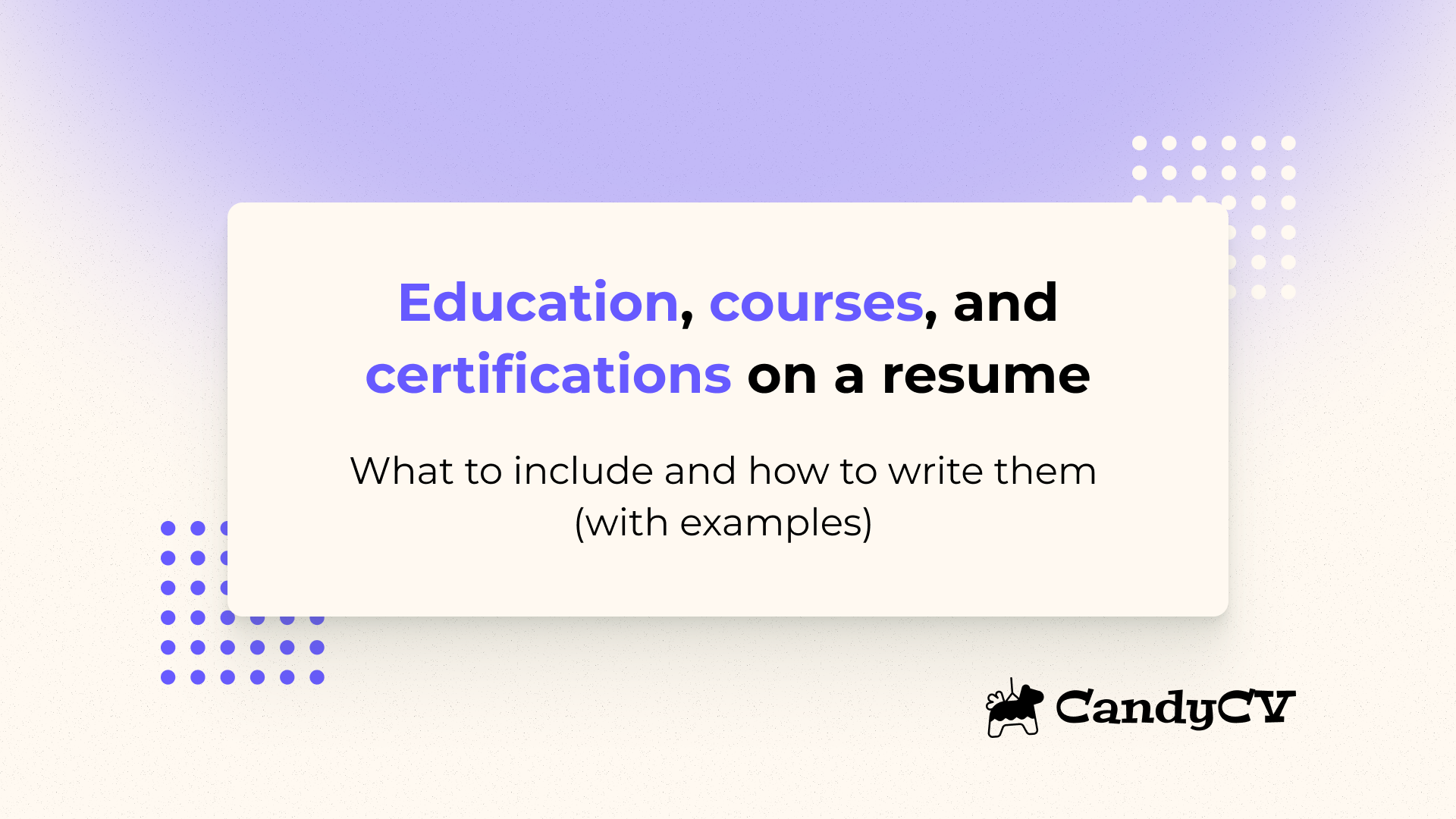
How to list Education and Certifications on your resume (with examples)
